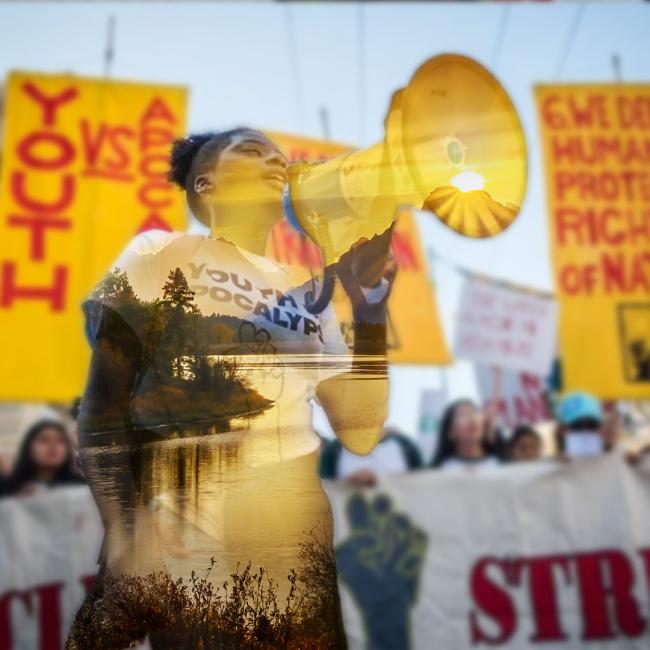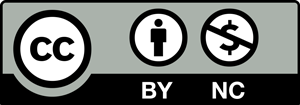Right Here Right Now: Obligations Educator Guide
Theme Two: Obligations
Begin by selecting one of the six themes below. Work through at least one activity listed in the theme with your students, then read through one of the stories and explore the ways to engage. Many activities and lessons have been chosen from the Climate Literacy and Energy Awareness Network(CLEAN) and include a teacher’s guide on how to best bring these lessons and activities into the classroom. For more information about CLEAN resources as well as support for teaching about climate energy, please visit the CLEAN website.
Guide Structure:
Each section of the guide adheres to the following format to scaffold the learning I) activities and lessons, ii) stories, and iii) ways to engage youth. By beginning the engagement with the conference content via an activity, students learn about different aspects of the theme. Stories are the second element of the educator guide. The stories strive to connect students to the people and places impacted by climate change and create empathy. Ways to engage in each theme is the focus of the final resource section of the guide. After exploring a topic and who it impacts, learning about how youth can take action will allow students to find hope, energy, and purpose while exploring topics that may feel overwhelming

Goals Header
What Students Will Do
- Begin by selecting one of the six themes below. Work through at least one activity listed in the theme with your students, then read through one of the stories and explore the ways to engage
Description
Education
Education is the key. Providing children with early knowledge and hands-on experience to climate solutions is critical — teaching our future leaders the importance of individual and collective actions.
Activities and lessons - Resources are from CLEAN, explore the full collection on the CLEAN website
Campus Greenhouse Gas Emissions Inventory, Suzanne Savanick, Macalester College
-
Description: Students conduct a greenhouse gas emission inventory for their college or university as a required part of the American College and University Presidents Climate Commitment.
-
Instructional Time: This is a long-term project (12 to 14 weeks).
-
Grade Level: Grades thirteen and up
The Co-produced Creative Climate Change Curriculum, Enacting Climate
-
Description: This collection of embodied activities is designed to support creative climate communication and behavior change. It supports students in generating expressions to inspire their circles of influence to adopt pro-environmental policies at the governmental, business, school, family or individual level.
-
Instructional Time: This is a twelve-lesson curriculum
-
Grade Level: Grades four and up
Turning Misinformation into Educational Opportunity Climate Change: Lesson 1 Scientific Consensus, National Center for Science Education
-
Description: This activity has students examine the misconception that there is no scientific consensus on climate change. Students explore temperature data and report their conclusions to the class. Then students examine techniques of science denial and examine a claim about scientific consensus.
-
Instructional Time: This learning activity takes one 60-minute class period.
-
Grade Level: Grades nine and up
Stories
Interview: Transform education, and avoid a global learning crisis- UN News
A Third University Is Always Happening: A Conversation with K. Wayne Yang, Nothing Ever Happen
Ways to Engage
Choose an action from the Ecochallenge “Health and Education” category
Ask your college to divest from fossil fuels
Reduce your school's carbon footprint by calculating current impacts and making a plan for reduction
Business and Industry
Although all areas of civil society play a part, businesses and industry have an influential role in shifting production and consumption behaviors and effects. Globally, organizations need to collaborate across industries and sectors, governments, and civil society to achieve effective climate solutions.
Activities and lessons - Resources are from CLEAN, explore the full collection on the CLEAN website
Fueling the future: Evaluating the sustainability of biofuels, Dana Haine, University of North Carolina, School of Education -https://cleanet.org/resources/44612.html
-
Description: In this activity, students consider the impact and sustainability of use of different classes of biofuels on the economy, the environment, and society. Students also learn about bioelectricity and how converting biomass to electricity may be the more efficient way to fuel cars in the 21st century.
-
Instructional Time: Activity takes about three 45-minute class periods.
-
Grade Level: Grades nine through twelve
Product Development and the Environment, Malinda Schaefer Zarske, Janet Yowell, Kaelin Cawley, Integrated Teaching and Learning Program, College of Engineering, University of Colorado Boulder -https://cleanet.org/resources/58159.html
-
Description: Students describe the steps in a product life cycle assessment and suggest ways to reduce the environmental impacts of engineered products.
-
Instructional Time: This activity takes one 60-minute class period. Special materials are required.
-
Grade Level: Grades six through eight
Introducing the economic concept of 'tragedy of the commons' using global warming, Laura Triplett, Gustavus Adolphus College- https://serc.carleton.edu/integrate/programs/implementation/program2/activities/135953.html
-
Description: Students begin by discussing historical environmental problems that demonstrate the economic principle of the 'tragedy of the commons'. The examples available here are sewage disposal in the Mississippi River, smog in London, and the ozone hole, but other examples could be used. Next, the instructor poses the question of whether global warming fits the tragedy of the commons model, and teaches some basic climate literacy concepts. Then, students brainstorm possible economic solutions to the global warming tragedy-of-the-commons. Instructor finishes by giving examples of economic solutions to historical environmental problems. This could easily lead into topics such as monetary and fiscal policy, economic development and globalization.
-
Instructional Time: One 50-minute classroom activity
-
Grade Level: Undergraduate level
Stories
Business leaders deliver bold solutions to unlock long-term investment in SDGs, UN News
A healthy economy should be designed to thrive, not grow, TED talk with Kate Raworth
$50 million+ Exit and Mission Driven, Podcast with Scott King
Ways to Engage
Choose an action from the Ecochallenge “Industry” category
Join the Sunrise Movement Good Jobs for All campaign
Learn about Doughnut Economics and create your personal doughnut for decision making
Law & Policy
The role of law and climate litigation is becoming increasingly prominent. People are using litigation as a tool to uphold accountability and ensure states, governments and businesses are upholding universal human rights—especially those affected by the climate crisis.
Activities and lessons - Resources are from CLEAN, explore the full collection on the CLEAN website
Clearing the Air, PINEMAP Project, University of Florida, Project Learning Tree- https://cleanet.org/resources/51272.html
-
Description: In this activity, students learn about the scientific evidence supporting climate change, use this information to evaluate and improve conclusions some people might draw about climate change, and participate in a role-play to negotiate solutions to climate change.
-
Instructional Time: Two to four 45-minute class periods depending on whether or not homework is assigned.
-
Grade Level: Grades six and up
Stabilization Wedges Game, Carbon Mitigation Initiative, Princeton University- https://cleanet.org/resources/41709.html
-
Description: This is a team-based activity that teaches students about the scale of the greenhouse gas problem and the technologies that already exist which can dramatically reduce carbon emissions. Students select carbon-cutting strategies to construct a carbon mitigation profile, filling in the wedges of a climate stabilization triangle.
-
Instructional Time: Activity takes about three 45-minute class periods, possibly more with the closure and assessment.
-
Grade Level: Grades nine through twelve
Regulating Carbon Emissions, Robyn Smyth (Bard College), Sandra Penny (Sage Colleges), Curt Gervich (SUNY Plattsburgh), Gautam Sethi (Bard College), Eric Leibensperger (SUNY Plattsburgh), Pinar Batur (Vassar College)- https://serc.carleton.edu/integrate/teaching_materials/carbon_emissions/index.html
-
Description: The module is interdisciplinary and interactive. Students will use an educational, web-based Dynamic Integrated Climate-Economy model (webDICE) to estimate the social costs of climate change and its abatement under different future emission scenarios. They will also play the Carbon Emissions Game to gain an understanding of the tradeoffs amongst different approaches to regulating carbon emissions. Upon completion, students will be able to explain the scientific evidence for man-made climate change from fossil fuel emissions, the policy options available for achieving emission reductions (e.g., emissions trading, carbon tax), and the legal basis for regulating carbon pollution under the Clean Air Act.
-
Instructional Time: This is a 3+ week college module
-
Grade Level: The module is built to fit into a 200-level college course, but could be scaled up or down
Stories
How courts can help protect human rights amid climate change, RHRN conference story
World’s 1.8 billion youth must ‘have a say in the future of the planet’, UN News
Ways to Engage
Host your own Youth Climate Summit
Learn how to connect with United Nations climate conferences with Climate Generation
Contact your representative about climate change policy
States
When a state stands as a leader of positive change, it establishes pathways for others to follow. Jordan was the first developing country to build end-to-end digital infrastructure to implement and track reductions in global greenhouse gas emissions.
Activities and lessons - Resources are from CLEAN, explore the full collection on the CLEAN website
Beat the Uncertainty: Planning Climate-Resilient Cities, Tarlise Townsend, Astrid Kause, Peg Steffen, Dinh Thai Hung, Than Ngo Duc, Vinh Nguyen Li Ai, Susan Fox, NOAA- https://cleanet.org/resources/56001.html
-
Description: This learning activity explores the concept of resiliency. It allows students to make city planning decisions and then employs a game to test their resilience decisions against potential impacts from severe weather, climate change, and natural hazards.
-
Instructional Time: This learning activity takes one to two 45 min class periods. Additional classroom materials needed: Flat-bottomed marbles; food containers.
-
Grade Level: Grades six and up
Evaluating the Effects of Local Energy Resource Development, Devin Castendyk, SERC - On the Cutting Edge Collection - https://cleanet.org/resources/41912.html
-
Description: This is a semester-long jigsaw project in which students work in teams to explore the effects of energy resource development on local water resources, economics, and society. Students are presented with a contemporary energy resource development issue being debated in their community. They research the water, geological, economic, and social impact of the project, and then either defend or support the development proposal.
-
Instructional Time: One semester
-
Grade Level: Grades nine and up
Selecting Sites for Renewable Energy Projects, Glenn A. Richard, Mineral Physics Institute - Stony Brook University, On the Cutting Edge Collection, Science Education Resource Center (SERC) - https://cleanet.org/resources/43135.html
-
Description: In this activity, students use Google Earth to investigate a variety of renewable energy sources and select sites within the United States that would be appropriate for projects based on those sources.
-
Instructional Time: Activity takes about two 40-min class sessions.
-
Grade Level: Grades nine and up
Stories
Adapt and survive: 5 ways to help countries cope with the climate crisis, UN News
Why climate change is a threat to human rights, Mary Robinson (RHRN keynote speaker) TED talk
The Small Island Nations that Got Big Action on Climate, How to Save a Planet podcast
Ways to Engage
Choose an action from the “building resilience” category of Ecochallenge that supports state-level action
Discuss joining the Justice40 Initiative with local organizations to further national action on climate justice
Work through the Guide to Assessing Green Infrastructure Costs and Benefits for Flood Reduction in order to inform policy in your community and your state
Global Collaboration
Collaboration by everyone is critical. Effective solutions will come about only when all voices are represented. Global collaboration requires unwavering commitment, especially from states, businesses and people who have contributed to the crisis the most.
Activities and lessons - Resources are from CLEAN, explore the full collection on the CLEAN website
Greenhouse Emissions Reduction Role-Play Exercise, K.M. Theissen, University of St. Thomas, Pedagogy in Action Collection from SERC - https://cleanet.org/resources/42716.html
-
Description: In this role-play activity, students take the roles of various important players in the climate change policy negotiation including politicians, scientists, environmentalists, and industry representatives. Working in these roles, students must take a position, debate with others, and then vote on legislation designed to reduce greenhouse gas emissions in the United States. Can be used in a variety of courses including writing and rhetoric, and social sciences.
-
Instructional Time: Activity takes two 2-hour class periods.
-
Grade Level: Grades nine and up
World Climate: Climate Change Negotiations Game, Tom Fiddaman, John Sterman, (Copyrighted by Climate Interactive, creators of the Climate Scoreboard, C-ROADS, Climate Bathtub and other interactive tools to enable thinking in systems) - https://cleanet.org/resources/43001.html
-
Description: This simulation provides scenarios for exploring the principles of climate dynamics from a multi-disciplinary perspective. Interconnections among climate issues, public stakeholders, and the governance spheres are investigated through creative simulations designed to help students understand international climate change negotiations.
-
Instructional Time: The game typically runs for 2-3 hours in length but can be run in as short as 45 minutes
-
Grade Level: Grades nine and up
Who Will Take the Heat?, PBS Teachers, NOVA - https://cleanet.org/resources/42679.html
-
Description: This activity engages students in a role play to negotiate an agreement between the United States and China about climate change policies. Students use given background material or can do their own additional research to present their assigned stakeholder's position in a simulated negotiation.
-
Instructional Time: Activity takes three to four 45-minute lesson periods.
-
Grade Level: Grades nine through twelve
Stories
We Go Inside the COP26 Climate Talks, How to Save a Planet podcast
Guterres: UN-African Union partnership a ‘cornerstone of multilateralism’, UN News
Let the environment guide our development, TED talk by Johan Rockstrom
Ways to Engage
Choose one of the UN Sustainable Development Goals and take action
The oceans are an international resource, so to support global ecosystem health chose an action from the Ecochallenge “Coastal, Ocean, and Engineered Sinks category
Apply to join the UN Youth Delegation
Individual Action
Although the climate crisis may seem overwhelming at an individual level, our collective actions do make a difference. Education and understanding can lead to informed, positive decision-making in the five domains of the Anatomy of Action: food, mobility, items, money and fun.
Activities and lessons - Resources are from CLEAN, explore the full collection on the CLEAN website
The Lifestyle Project, Karin Kirk, John J. Thomas, SERC - Starting Point Collection-https://cleanet.org/resources/41895.html
-
Description: This multi-week project begins with a measurement of baseline consumptive behavior followed by three weeks of working to reduce the use of water, energy, high-impact foods, and other materials. The assignment uses an Excel spreadsheet that calculates direct energy and water use as well as indirect CO2 and water use associated with food consumption. After completing the project, students understand that they do indeed play a role in the big picture. They also learn that making small changes to their lifestyles is not difficult and they can easily reduce their personal impact on the environment.
-
Instructional Time: This is a multi-week project that can either be done as a project assignment outside the classroom or adapted to be carried out over a shorter time scale.
-
Grade Level: Grades six and up
From Grid to Home, Marie Johnson, SERC - On the Cutting Edge Collection- https://cleanet.org/resources/41900.html
-
Description: In this classroom activity, students analyze regional energy usage data and their own energy bills to gain an understanding of individual consumption, regional uses, costs, and sources of energy.
-
Instructional Time: Activity takes one class period.
-
Grade Level: Grades six and up
Zero-Energy Housing, Jonathan MacNeil, Malinda Schaefer Zarske, Denise W. Carlson, TeachEngineering by the Integrated Teaching and Learning Program- https://cleanet.org/resources/41890.html
-
Description: Students investigate passive solar building design with a focus on heating. Insulation, window placement, thermal mass, surface colors, and site orientation are addressed in the background materials and design preparation. Students test their projects for thermal gains and losses during a simulated day and night then compare designs with other teams for suggestions for improvements.
-
Instructional Time: Activity takes multiple (six to seven) 50-minute class periods. Additional materials are necessary.
-
Grade Level: Grades six through twelve
Stories
How I fell in love with a fish - Dan Barber, TED Talk
ACE Interview: Aarushi Khanna on Climate Change and Climate Anxiety
What are YOU Doing To Tackle Climate Change? Four Stories From Our Listeners, How to Save a Planet Podcast
Ways to Engage
Write and submit a climate-focused op-ed
Join a youth climate advocacy group
Lower your carbon footprint



